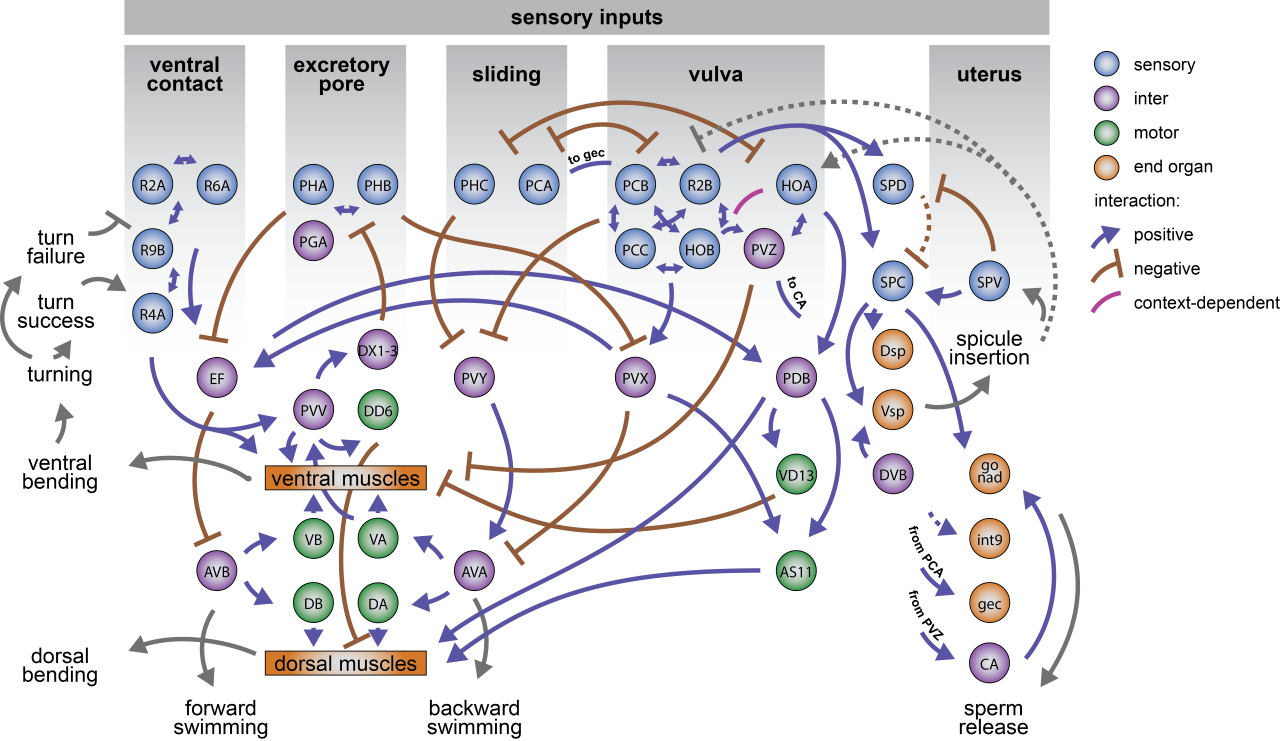
All animals heavily interact with their environments, which reflects in their brain activities and organizations. Previous studies have demonstrated that neuronal circuits and organization tend to vary depending on the situation or behaviour of the tested animal. In collaboration with Harvard and Northeastern University research teams, Prof. Mei Zhen’s lab recorded and analyzed the neuronal dynamics in the posterior brain of a male C. elegans during mating with brain-wide neuronal imaging.
The team built brain-to-behaviour computational models that predicted behaviour depending on group neuron activity. They also found that models trained by motor neurons were the most accurate in predicting behaviour compared to sensory and interneurons. Furthermore, the researchers grouped and clustered neurons based on mating behaviours such as turning, searching for a mate, and resting after mating—in addition to describing excretory pore detection on the hermaphrodite by the male, a behaviour previously unidentified during mating.
Almost all the neurons presented unique and temporal functions, and several belong to multiple functional clusters. Neuron function correlations are dependent and specific for the behaviour (ex. can be co-active in one situation and inverse activity levels in another). Moreover, the team found functional correlations between specific neurons are common when their synapses aren’t directly connected, and shared synaptic input could predict correlations. The number of shared electrical synapses was a better predictor of functional correlation than chemical synapses, while the latter plays a larger role in signalling. In addition, neurons connect to both other neurons in their own and other behavioural clusters. The most significant discovery was how sensory neuron correlation was context-dependent and was influenced by the sensory stimuli produced by the hermaphrodite worm the male mated with.
In essence, this study provides important insight into animal brain evolution and the interplay between behaviour and neuron activity. It demonstrates unique neuronal activities for different behaviours and that neuron correlation is not set in stone but influenced by whatever environment and resulting situation the worm - or any animal for that matter - finds itself in.
*Read the full article here on Cell Press or search for Susoy et al., Natural sensory context drives diverse brain-wide activity during C. elegans mating, Cell (2021), https://doi.org/10.1016/j.cell.2021.08.024.